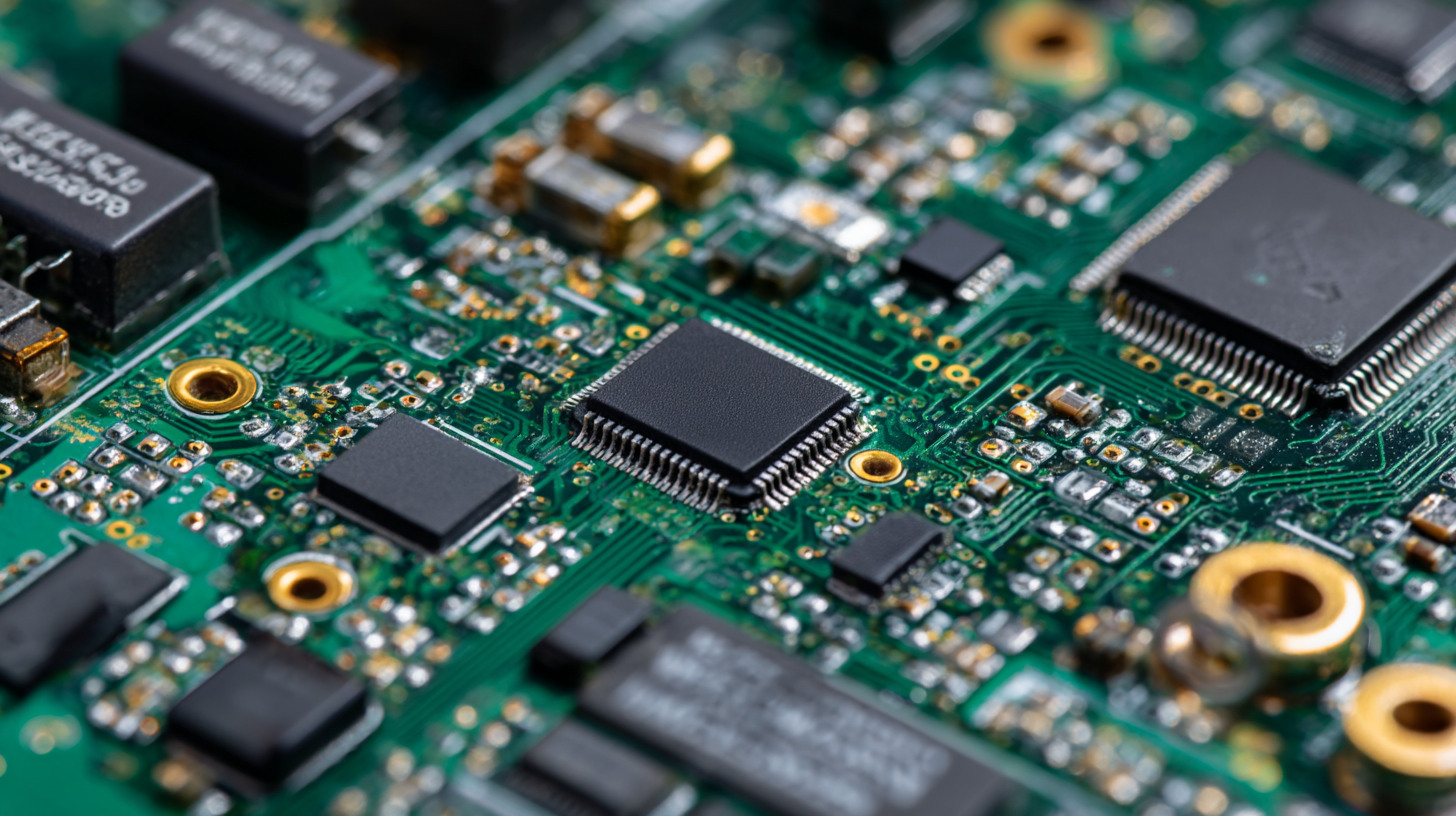Exploring the Future of Flexible Circuit Boards: Innovations and Applications in Modern Technology
The evolution of technology has ushered in a new era of innovation, where the demand for
sophisticated electronic components continues to rise.
Among these advancements, the Flexible Circuit Board (FCB) stands out
as a pivotal element in modern electronics, enabling a revolutionary shift towards
compact, lightweight, and highly functional devices. This article delves into the
multifaceted innovations and applications of Flexible Circuit Boards, exploring their role
in enhancing the performance of various technologies, from consumer electronics
to medical devices and automotive systems.
As industries grapple with the need for greater efficiency and adaptability,
FCBs emerge as a critical solution, offering
unparalleled flexibility and durability.
In this exploration, we will examine not only the current state
of Flexible Circuit Board technology but also its future potential, highlighting the exciting
developments that are poised to redefine our interactions with electronic systems.
Through this lens, we aim to illuminate the profound impact that FCBs will have on the
technological landscape in the years to come.

The Evolution of Flexible Circuit Board Technology and Its Impact
 The evolution of flexible circuit board technology has been a pivotal force in the advancement of modern electronics. Originally developed to accommodate the compact design of electronic devices, flexible circuit boards (FCBs) have undergone significant transformations. From simple, flat designs to complex, multi-layered systems, these innovations have enabled manufacturers to create lightweight, durable, and space-efficient products. The ability to bend, twist, and fold circuits not only optimizes the use of available space but also enhances the overall functionality of electronic devices, paving the way for advancements in areas such as wearable technology and mobile devices.
The evolution of flexible circuit board technology has been a pivotal force in the advancement of modern electronics. Originally developed to accommodate the compact design of electronic devices, flexible circuit boards (FCBs) have undergone significant transformations. From simple, flat designs to complex, multi-layered systems, these innovations have enabled manufacturers to create lightweight, durable, and space-efficient products. The ability to bend, twist, and fold circuits not only optimizes the use of available space but also enhances the overall functionality of electronic devices, paving the way for advancements in areas such as wearable technology and mobile devices.
Moreover, the impact of flexible circuit boards extends beyond just consumer electronics. Industries such as automotive, healthcare, and aerospace are increasingly reliant on FCB technology for their intricate applications. For instance, FCBs are integral to the development of advanced driver-assistance systems in vehicles, providing the necessary flexibility to integrate sophisticated sensors and displays. In the medical field, these circuits enable the creation of more compact and efficient medical devices, including diagnostic and monitoring equipment, which improve patient care. As flexible circuit board technology continues to evolve, its applications will likely expand further, driving innovation and enhancing the performance of various technological sectors.
Key Innovations Driving the Future of Flexible Circuit Boards
Flexible circuit boards are at the forefront of modern technological innovations, revolutionizing industries from consumer electronics to medical devices. Key innovations driving this transformation include advanced materials that enhance flexibility and durability, as well as manufacturing techniques such as printed electronics and 3D printing. These advancements not only allow for more complex designs but also contribute to lightweight and compact device construction, which is particularly valuable in portable technology.
**Tips:** When designing products with flexible circuit boards, consider the end application's environmental factors. High-temperature resistance or moisture protection may be essential for devices used in demanding conditions. Additionally, collaborate with manufacturers who specialize in flexible substrates to ensure the best material choice for your specific needs.
Furthermore, the integration of IoT technology with flexible circuit boards represents a significant trend. As devices become smaller and more interconnected, these circuits enable seamless functionality, durability, and adaptability. The rise of wearable technology is a prime example where flexible circuits are critical, providing the necessary form factor and comfort without sacrificing performance.
**Tips:** When selecting flexible circuit solutions for wearables, assess the balance between flexibility and electrical performance to maintain device reliability. Always evaluate the potential for scalability in your designs to accommodate future upgrades or expansions.
Key Innovations in Flexible Circuit Boards
This chart illustrates the current investment trends in key innovations driving the future of flexible circuit boards. It highlights the focus areas including Material Innovation, Manufacturing Techniques, Design Flexibility, Integration with IoT, and Cost Efficiency.
Diverse Applications in Consumer Electronics and Beyond
 Flexible circuit boards are increasingly becoming integral to the landscape of consumer electronics and various other industries. Their adaptability allows for innovative designs and efficient use of space in devices, from smartphones to wearables. The demand for increasingly complex functionalities has driven advancements in circuit technology, enabling manufacturers to create thinner, lighter, and more durable products that cater to consumer needs.
Flexible circuit boards are increasingly becoming integral to the landscape of consumer electronics and various other industries. Their adaptability allows for innovative designs and efficient use of space in devices, from smartphones to wearables. The demand for increasingly complex functionalities has driven advancements in circuit technology, enabling manufacturers to create thinner, lighter, and more durable products that cater to consumer needs.
Tips: To maximize the benefits of flexible circuit boards in your product development, consider integrating cutting-edge technologies such as spatial audio and energy-efficient chip designs. This will not only enhance user experience but also align with trends toward sustainability and smart technology solutions.
Furthermore, as industries explore the potential of IoT applications, the functionality of flexible circuit boards will play a pivotal role in connecting devices seamlessly. Manufacturers can leverage these innovations to tap into emerging markets, enhancing the user experience while ensuring their products remain at the forefront of technology. This positions flexible circuits as a cornerstone for future innovations across various sectors beyond traditional consumer electronics.
Challenges and Solutions in Flexible Circuit Board Production
The production of flexible circuit boards faces several challenges that are crucial to address for the continued advancement of modern technology. As the demand for ultra-thin and lightweight electronic devices rises, manufacturers must confront issues such as material selection, scalability, and cost-effectiveness. Innovations in materials, like metal inkjet printing, offer promising solutions by enabling sustainable and eco-friendly production processes. These advancements not only enhance the manufacturing capabilities but also align with growing environmental concerns, making flexible circuit boards a viable option for future applications.
Furthermore, the integration of artificial intelligence is transforming PCB manufacturing by optimizing production workflows and improving design accuracy. As seen in recent market trends, the flexible electronics sector is evolving rapidly, with significant growth projections driven by rising smartphone adoption and the increasing need for innovative electronics. Addressing the technical challenges in this field can open doors to new opportunities, enhancing the functionality of flexible devices and expanding their applications across various industries, including automotive and healthcare.
Future Trends: Sustainability and Customization in Flex Circuits
The future of flexible circuit boards (FPCs) is increasingly oriented towards sustainability and customization, addressing the demands of modern technology. As the market for flexible printed circuits continues to expand, driven by applications in consumer electronics and automotive sectors, there is a growing emphasis on eco-friendly materials and manufacturing processes. Innovations in organic substrates and recyclable components not only reduce environmental impact but also align with global efforts toward sustainable production.
Customization stands out as a significant trend in the FPC market. With industries seeking tailored solutions, manufacturers are focusing on offering flexible circuit boards that meet specific design and performance requirements. This adaptability is particularly important in sectors like healthcare and industrial applications, where diverse functionalities are needed. As the market evolves, advancements in motor control technology also play a crucial role, with new ideas and technologies paving pathways to improved efficiency in various devices. The intersection of sustainability and customization in flexible circuits promises to redefine product development and application capabilities in the years to come.